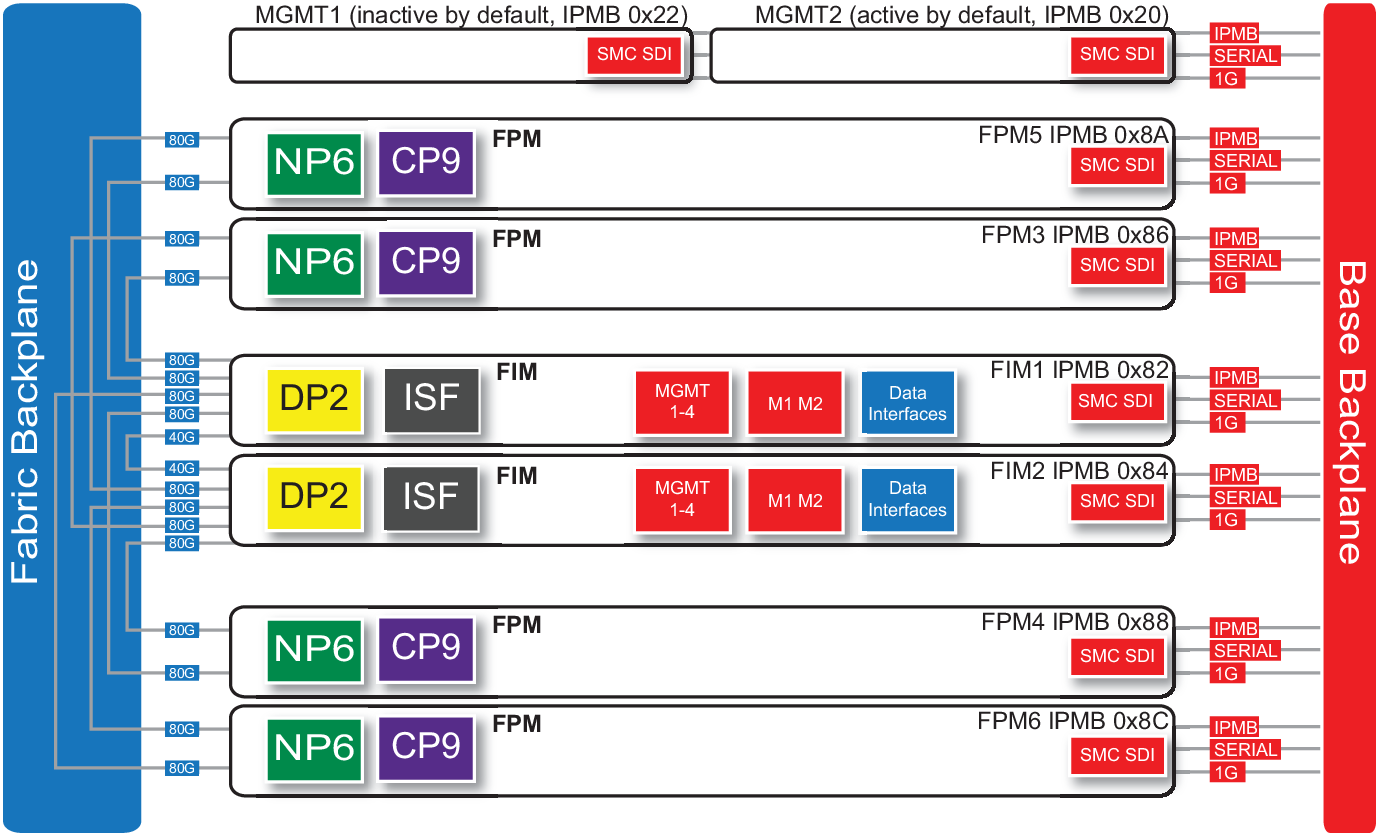FortiGate-7060E
The FortiGate-7060E is a 8U 19-inch rackmount 6-slot chassis with a 80Gbps fabric and 1Gbps base backplane designed by Fortinet. The fabric backplane provides network data communication and the base backplane provides management and synch communication among the chassis slots.
FortiGate-7060E front panel
The chassis is managed by two redundant management modules. Each module includes an Ethernet connection as well as two switchable console ports that provide console connections to the modules in the chassis slots. The active management module controls chassis cooling and power management and provides an interface for managing the modules installed in the chassis.
FortiGate-7060E front panel, (example module configuration)

Power is provided to the chassis using four hot swappable 3+1 redundant 100-240 VAC, 50-60 Hz power supply units (PSUs). You can also optionally add up to six PSUs to provide 3+3 redundancy. The FortiGate-7060E can also be equipped with DC PSUs allowing you to connect the chassis to -48V DC power
The standard configuration of the FortiGate-7060E includes two FIM (interface) modules in chassis slots 1 and 2 and up to four FPM (processing) modules in chassis slots 3 to 6.
FortiGate-7060E schematic
The FortiGate-7060E chassis schematic below shows the communication channels between chassis components including the management modules (MGMT), the FIMs (called FIM1 and FIM2) and the FPMs (FPM3, FPM4, FPM5, and FPM6).

By default, MGMT2 is the active management module and MGMT1 is inactive. The active management module always has the Intelligent Platform Management Bus (IPMB) address 0x20 and the inactive management module always has the IPMB address 0x22.
The active management module communicates with all modules in the chassis over the base backplane. Each module, including the management modules has a Shelf Management Controller (SMC). These SMCs support IPMB communication between the active management module and the FIM and FPMs for storing and sharing sensor data that the management module uses to control chassis cooling and power distribution. The base backplane also supports serial communications to allow console access from the management module to all modules, and 1Gbps Ethernet communication for management and heartbeat communication between modules.
FIM1 and FIM2 (IPMB addresses 0x82 and 0x84) are the FIMs in slots 1 and 2. The interfaces of these modules connect the chassis to data networks and can be used for Ethernet management access to chassis components. The FIMs include DP2 processors that distribute sessions over the Integrated Switch Fabric (ISF) to the NP6 processors in the FPMs. Data sessions are communicated to the FPMs over the 80Gbps chassis fabric backplane.
FPM03, FPM04, FPM05, and FPM06 (IPMB addresses 0x86, 0x88, 0x8A, and 0x8C) are the FPM processor modules in slots 3 to 6. These worker modules process sessions distributed to them by the FIMs. FPMs include NP6 processors to offload sessions from the FPM CPU and CP9 processors that accelerate content processing.

